A Closer Look
The AXUS FiT 500 came very nicely packaged in a high quality box, with no expense spared on packaging. Each tray had at least a half inch of foam around it and everything fit very snugly in the box, so you don’t have to worry about it getting damaged on delivery. At ~8″ tall and ~9.5″ deep, the FiT 500 is a very small and compact device that does not have a very large footprint. It comes with a hot-swappable fan, so you don’t have to turn off the device to change out a failed fan, and has a very nice matte plastic enclosure that feels very solid. Sadly, the 500E model does not come with Firewire 800 (sad to me at least).
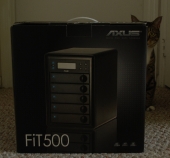 |
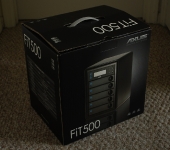 |
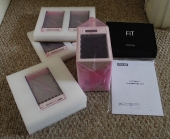 |
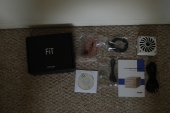 |
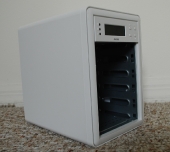 |
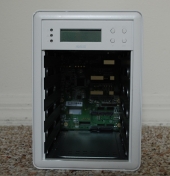 |
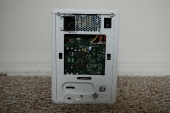 |
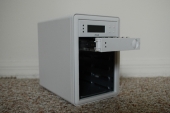 |
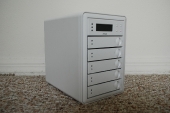 |
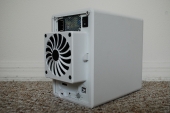 |
| Say ‘Hi’ to my cat! She wouldn’t leave the box a lone | |
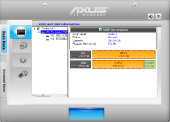 |
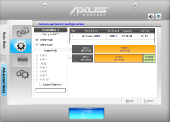 |
| Here is a screen shot of the managing software. | |
Installation and Setup
To install the hard drives, you simply screw them onto the tray using the supplied screws and slide them in.
Setting up the drives is very simple and only requires that you have a very simple knowledge of the each type of RAID. Using the rotary switch on the back, you simply turn it to the type of RAID you want, hold a button on the back and turn it on, then release the button ~5 seconds after turning it on. This will automatically RAID all the drives you have in the box to the specified RAID type. If you don’t like this approach, you can switch the switch to “GUI” and use the LCD screen to manually place the drives into your specified RAID, or you use the provided software. The FiT 500 offers RAID0, 1, 3, 5, 10, LARGE and CLONE. LARGE is similar to RAID0, in that it uses the drives as one large piece of storage, but it doesn’t use RAID, so you don’t have the speed. CLONE creates a clone volume and all of the hard disks are backed up to each other.
After setup (RAID0 using the rotary switch), I plugged it into my computer, and something I didn’t expect happened: nothing. For some reason my computer didn’t see the drive. I though maybe the FiT 500 didn’t support Windows 7, but that wasn’t the case, because when I plugged it in with USB, the device manager knew it was there, but it wasn’t showing up in My Computer. I then tried the 3 different ways of making a RAID (rotary switch, screen, and software) several times, but to no avail. Finally, I thought, maybe my Mac will read it; I’ve had things not work in Windows, but on my Mac and visa-versa, several times, so why not. I plug it in, and low and behold, I get a failed to initialize prompt. I click on “Initialize…” and it opens Disk Utility. The drive still wont show up on my desktop.
Frustrated I tried anything, even if it doesn’t make any sense. Which is what brought me to the answer: I erased the hard drive. Even though the 2 drives in RAID0 were formatted on creation, for some reason I had to erase them again. I couldn’t do this in Windows, because the RAID wasn’t showing up as a viable drive. Whether this is a quirk of the FiT 500, or just a fluke due to the old and non-matching drives I was using (see testing) is up for debate, but this is not a good thing. Let’s see how the Fit 500 fairs on the bench though, before we make our final decision about the enclosure. That aside, the FiT 500 runs very quiet even during drive access.

[…] TechwareLabs examines the AXUS FiT 500 RAID box […]
[…] Link: http://www.techwarelabs.com/axus-fit-500/ […]
[…] AXUS FiT 500 RAID box @ Techware Labs – Thecus N7700 Ultimate NAS Server @ Virtual-Hideout – Seagate Barracuda XT 2TB HDD @ Neoseeker – […]
[…] TechwareLabs plays with the AXUS FiT 500 RAID box […]
[…] AXUS FiT 500 RAID box @ TechwareLabs […]